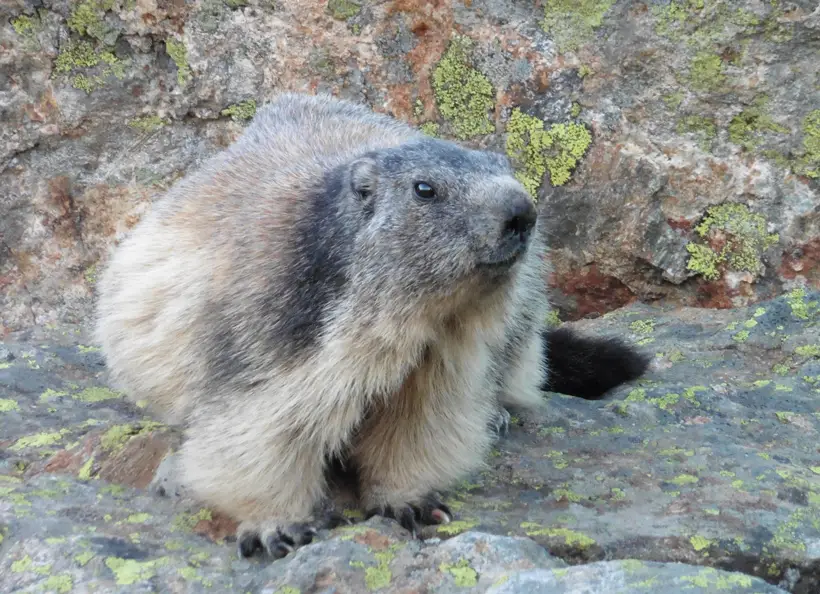Where Do Marmots Live?
Marmots are one kind of giant ground squirrel. You will not find them worldwide as they are only typical of some particular areas. Commonly, their habitat preferences impact their adaptations, survival, and reproductive activities.
Then, where do Marmots live? Generally, they live in mountainous, forest, and tundra areas in Europe and North America. You may also find a few species in India, Tibbet, Nepal, and Central Asia.
In this article, we will discuss their habitat preferences and distributions. Besides, you can also learn about the alpine marmots’ habitats. So, keep reading.
Marmot Habitat Preferences
Generally, marmots make their caves in such areas, from where it’s easier for them to keep their eyes out for any danger.

Mountains are their favorite place to live, but you can also find them in the plains. Typically, you may find them in montane meadows, steppes, tundra, and forest edges.
Roles Of Marmots Habitat Preferences On Survival And Reproduction
Ground squirrels or marmots love to live where they can adapt to the climate and nature. Here are a few examples of how their habitat preferences aid their survival and reproduction:
- For making burrows, they need well-drained soil areas. In their preferred habitats, the soil is either soft for digging or has suitable places for burrows
- Their habitats are generally far from human habitats; this prevents excessive hunting of these animals
- They live in areas with good visibility so that they can get alert to their upcoming dangers easily
- Marmots hibernate in caves during winter to survive the harsh cold weather and scarcity of food
- They choose habitats in such areas that the male leader of their community can protect his female from male intruders
Habitat Preferences And Food Sources
The diet habit of marmots helps them to survive in their natural habitats. Some researchers say this animal is an herbivore, but some also say that this animal is an omnivore. Generally, their diet habits will depend on where they live. Here are several factors in this regard:

- Marmots that are native to North America mainly feed on various plants, flowers, and seeds
- During summer, they live on fresh and green vegetation
- Living in cold areas, and during the winter, food will be scarce. Therefore, they start to store food during the fall. Then, during winter, they will depend on their stored foods for survival
- Different shrubs, willows, and berry bushes are available in the Alpine and tundra areas. Marmots can eat these types of plant
- Also, alpine marmots can eat such plants that might be poisonous to other animals
- In their natural habitats, there are plenty of water sources from where they obtain water
- During food scarcity, they can also eat small bird eggs and insects. This phenomenon is quite rare
Marmot Distribution Patterns
Generally, this rodent is native to Europe and North America. In Europe, Alpine species primarily live in the Carpathians, Alps, and Pyrenees. In other words, they live from the Pacific to the Atlantic coasts and from Alaska to Mexico.
Besides, you will also find them in the US and western Canada. There, you will find them in Mountainous areas like the Cascades, Sierra Nevada, and the Rocky Mountains.

The Himalayan Marmots are native to the mountains of Nepal, Tibet, and India. Again, you can see long-tailed marmots in Central Asia’s Tien Shen mountains.
Factors Related To The Distribution Pattern
Climates play an essential role in their distribution patterns. So marmot range or their distribution patterns around the globe will depend on a few factors, such as:
- Alpine marmots are likely to live in cold weather, whereas long-bellied species prefer warm and dry weather more. That’s why their natural habitats are different
- Marmots always live in higher elevations, generally 4,000 ft to 10,000 ft more above sea level. Because this type of place provides them with safer shelter than any other lower places
- The climate cycles of mid to high-latitude areas have plenty of plants and water sources. These make them suitable places for Marmots’ habitats
Relationship Between Marmot Distribution Patterns And Human Activities
Marmots are sensitive to human disturbances. They generally need mountainous and forest areas far away from human habitats. There are a few reasons for this, those are:
- Light and noise pollution may reduce this rodent’s reproduction output and body condition. Besides, this will also impact their wildlife behavior
- They always keep alert of the intruders, and upon sensing them, they rush into their burrows. Then, they keep whistling until those intruders leave the place
- Groundhogs can damage the crops and plants of farmers and gardeners
- Usually, marmots will keep their distance from humans and tend to escape upon sensing a human presence. But if they can’t find a way to escape and feel threatened, they might attack humans also
Alpine Marmots
Generally, an Alpine marmot will weigh around 1.9kg to 8 kg, which is the heaviest among all the squirrel species. Like any other marmot species, this species also has dense fur. Their fur is a combination of reddish, blonde, and dark grey.

Habitats Preferences
You will find this alpine species mainly in the mountain areas of Southern and central Europe. Typically, this species of ground squirrel prefers high-altitude pastures and meadows as their habitats. The reasons behind their these preferences are:
- In the rocky areas, they can make deep burrow systems for their emergency escaping
- In higher altitudes, it’s easier for them to stay alert about trespassing intruders
- Sometimes they lay flat on the rocks to cool their body, which helps them to handle their body parasites
Roles In Mountain Ecosystem
Here are several roles of them in the mountain ecosystem services:
- They feed on herbs and seeds; thus, which helps in the recycling of nutrients and seed dispersal. This way, they protect the mountain ecology
- The decreasing number of this species refers to the pollution of the environment
- They are the food source of many large predators like cytokines, foxes, and bears. This completes the food cycle and protects the wildlife biodiversity
- Their burrows help in creating aeration in the soil, which helps in enriching the soil and provides a suitable condition for the plant growth
Threats To Alpine Marmots

Here, we are mentioning several threats to this species:
- Alpine marmots can even die if the temperature increases much. Thus, global warming is a significant threat to them
- Generally, this species of marmot loves to live in large and open places. But due to urbanization and lack of proper natural resources management, they are facing the habitat loss issue
- These marmots are vulnerable to intestinal parasites. A large number of individuals die from this type of disease every year
- They are also a food source for a large group of predators
- Their fat is a remedy for arthritis and rheumatism, that’s why people hunt them to collect their fat
- In some countries, hunting alpine marmots is a famous sport
FAQs
In this FAQs section, we will answer several common questions about the marmots:
Q: How Do Marmots Adapt To Their Mountainous Habitats?
In their mountainous habitats, they make burrows to escape quickly from their predators. Also, they use cliffs and rocks as their observation sites to keep alert eyes on their predators.
Q: Can Marmots Survive Outside Of Their Natural Habitats?
If you put them somewhere else instead of their natural habitats, their longevity will decrease. That’s because they adapted themselves to the climate and environment of their wildlife habitats for survival.
Q: What Should I Do If I See A Marmot In The Wild?
Keeping your distance is better if you see a marmot in the wild. Though they aren’t aggressive, they can bite you if they feel threatened by you.
Conclusion
Understanding the marmot’s habitat preferences is necessary to understand their wildlife management system. But where do marmots live? They usually live in grassland, meadows, forests, and Mountainous areas of Europe, North America, and Central Asia.
Biodiversity conservation organizations encourage letting these rodents be in their native places as adapting to foreign climates is difficult. Though they are not endangered species, as an animal enthusiast, you should conduct further researches to provide them with a safe living place.





